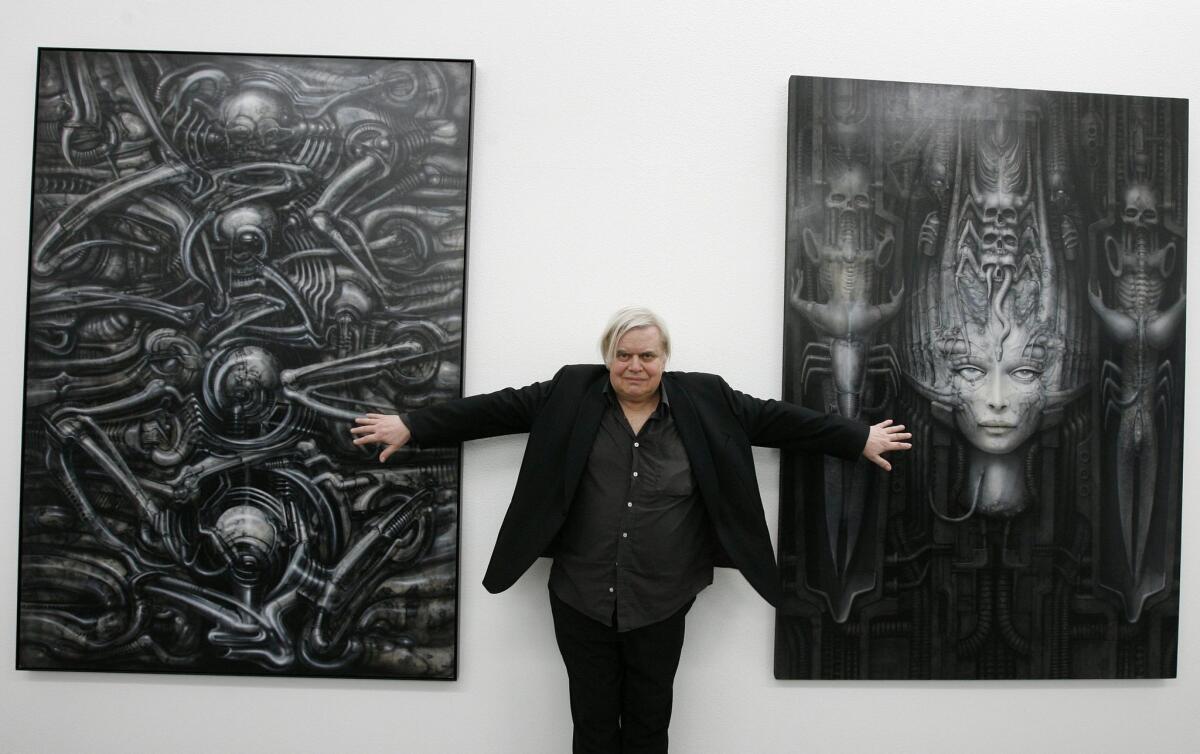H.R. Giger dies at 74; Artist behind ‘Alien’ dealt in the surreal

H.R. Giger, the Swiss surrealist designer and artist who died Tuesday at 74, is being remembered primarily for his visual contributions to the 1979 movie “Alien” and its sequels. His conception for the movies’ malevolent Xenomorph, featuring an exoskeleton physique, vagina dentata mouth and phallic cranium, is a farrago of sexual phobias made flesh and molecular acid.
Giger was a prolific visual artist, having churned out illustrations, paintings, sculptures, bizarro installations and even a lounge in New York’s infamous Limelight nightclub that was decked out in the artist’s signature creepy designs.
His surrealistic creations were numerous enough for Giger to create his own museum, which is in a chateau in the historic town of Gruyères, Switzerland. His art work is often noted for bringing together the biological and mechanical into hybrid creations with nightmarish dimensions.
More a fanboy cult figure than a respected artist, at least as far the critical establishment was concerned, Giger nevertheless identified himself as a creative heir of Salvador Dali, the famed Spanish surrealist. Some of Dali’s works reside in Giger’s haunted-house museum as part of his private collection.
Giger exhibited his work around the world. On the occasion of a 1998 exhibition of his work at a gallery in Beverly Hills, he told The Times in an interview that “Alien” director Ridley Scott hired him after seeing his book “Necronomicon,” an illustrated tome published in 1977.
“You know, people are saying that in this century, film is more important than painting. It is stronger than the strongest piece of art,” Giger said. When asked if he agreed with that assessment, he replied, “Yes.”
The “Alien” movies weren’t Giger’s only foray into cinema. He contributed designs to other science-fiction films such as “Species” and was featured in the recent documentary “Jodorowsky’s Dune,” having contributed designs for the director’s aborted film adaptation of the Frank Herbert novel.
Giger won an Academy Award for his work on “Alien.” One of his biggest claims to fame was designing the macabre cover art for the 1973 album “Brain Salad Surgery” by the rock group Emerson, Lake and Palmer.
The designer reportedly died from injuries sustained during a fall. A full obituary will appear at latimes.com/obituaries.
More to Read
The biggest entertainment stories
Get our big stories about Hollywood, film, television, music, arts, culture and more right in your inbox as soon as they publish.
You may occasionally receive promotional content from the Los Angeles Times.











